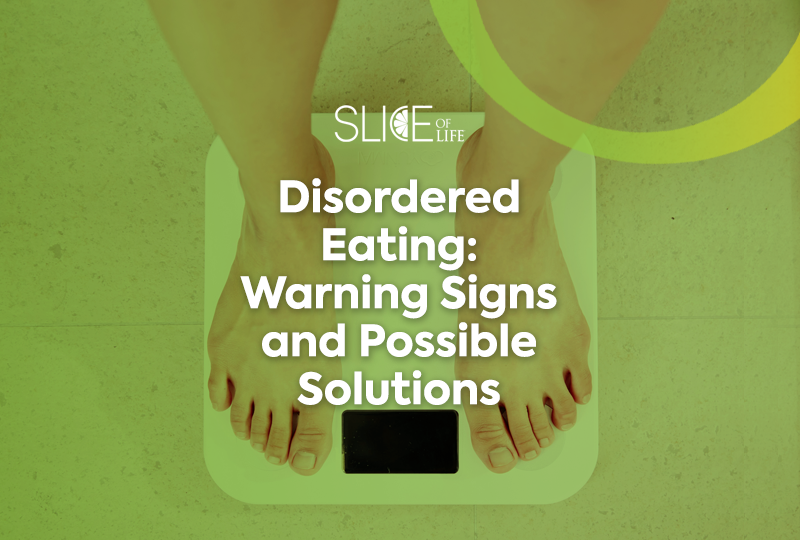Those of us born in the Instagram era have an especially acute and tangible source of toxic beauty culture constantly shouting from all angles, forever raising the stakes for what is a so-called acceptable way for someone to look, dress, exist. Naturally, obsessions over thinness and how to attain unattainable beauty standards can often lead into unhealthy and even deadly territory. From thigh gaps to mad dashes to get that #summerbody bikini ready, it’s no wonder that disordered eating and eating disorders seems to be a growing concern both nationally and internationally.
Harvard’s Strategic Training Initiative for the Prevention of Eating Disorders (STRIPED) released their 2020 Economic Costs of Eating Disorders Report, which included some alarming statistics. It reported that 9% of the U.S. population, or 28.8 million people, will have an eating disorder at some point in their life. Like all illnesses, it effects different populations in a variety of ways. People of color are half as likely to get a proper diagnosis or treatment, and women are twice as likely to develop an eating disorder.
Seemingly innocuous disordered eating habits often occur leading up to a recognizable eating disorder diagnosis, so knowing the signs and seeking help might help prevent further physical and mental damage.
Disordered Eating Versus Eating Disorders
There are many harmful myths and misconceptions about disordered eating and eating disorders that can prevent people from getting help. The Cleveland Clinic seeks to debunk this misinformation in their article “How to Recognize the Warning Signs of Disordered Eating (and What to Do).” Disordered eating encompasses the spectrum of eating disorders (anorexia, bulimia, binge eating disorder), but it is often used to classify a larger percentage of people that present with some symptoms of eating disorders but with less frequency or severity to signal a definitive problematic eating pattern. Having a less quantifiable disordered eating condition can add to the confusion of the problem and still contribute to a person’s distress and harm their overall health and life quality.
Picture in your mind what you think of when you think of a person who might have an issue with disordered eating or an eating disorder. If you pictured a thin, white woman, then you would not be alone in that assumption. However, this is an illness that crosses all barriers. Males account for an estimated third of the eating disorder community, according to the National Eating Disorders Collaboration. Overweight individuals can also present with disordered eating symptoms, but they are not often tested unless their weight drastically decreases.
There are a number of troubling behaviors that can be attributed to disordered eating, such as restricted eating, compulsive eating and eating irregularly or only under strict conditions. Dieting, fasting, food binges, meal skipping and intentional purging also fall under this purview. Medical misuse is also common, overusing laxatives, diuretics, enemas and steroids. Fad diet pills pose a major risk as well.
Here are a few physical signs to watch out for that could indicate disordered eating.
- Yo-yo, up and down weight.
- Stomach pains and complaints about gut issues.
- Bowel habit changes
- Menstrual period fluctuations, such as stopping or missing periods
- Dizziness, weakness, fatigue
- Fainting
- Skin and hair changes (brittleness or dryness)
- Dental issues related to acid, such as cavities and enamel erosion, can be caused by purging or bulimia.
Emotional signs can also point to disordered eating, such as
- Preoccupation with weight, food consumed, diet, calories and carbs that supersedes all other concerns of daily life
- Obsessing over physical appearance, the body’s size or shape, specific body parts and/or the blinking number on an unforgiving scale
- Cutting out large categories of food and only including a small number of foods safe to eat
- Developing highly specific food rituals
- Avoiding eating socially or feeling uncomfortable eating in front of others
Swift intervention is key, as the longer these harmful habits are allowed to develop, the more entrenched and normalized they become. If you or a loved one are concerned about potential disordered eating, consult your primary healthcare professional to reach a clearer diagnosis and determine a care plan. Strong support systems can be a lifeline in the midst of inner turmoil.
Want to learn more about Nutrition as a career? Visit the Life University Bachelor of Science in Nutrition home page.


Social Media